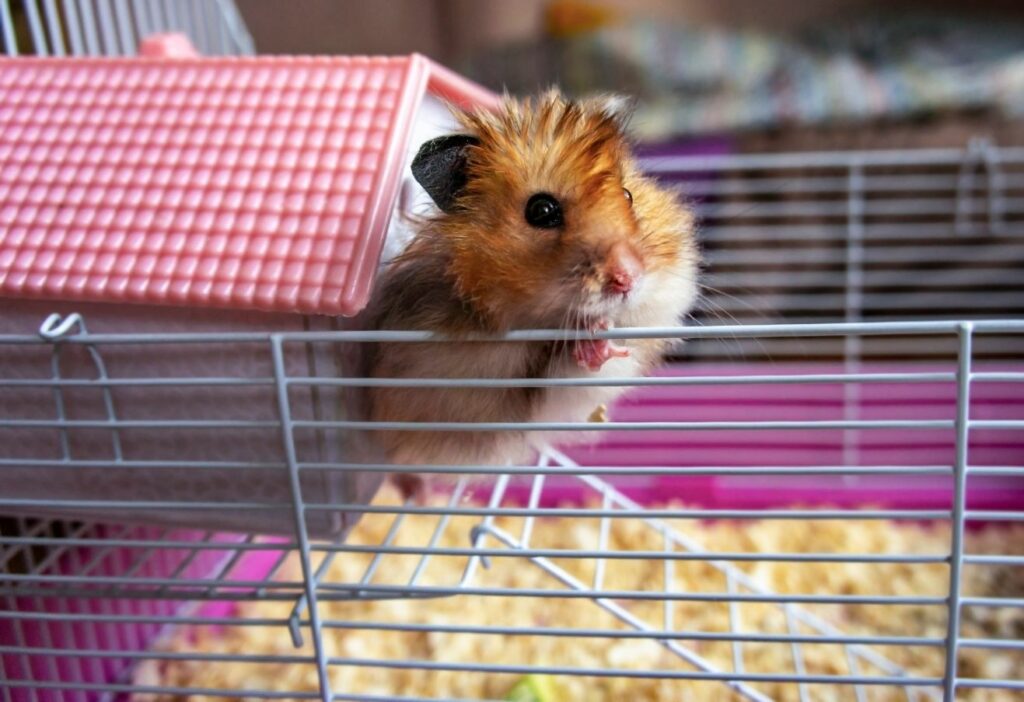Hamsters are one of the most popular small pets around the world, known for their cute and cuddly appearance. However, sometimes hamsters can exhibit aggressive behavior that can be alarming for their owners.
In this blog post, we will discuss hamster aggression, the different types, causes, symptoms, and treatment options.

What is Hamster Aggression?
Hamster aggression refers to aggressive behavior exhibited by hamsters. It can manifest in different forms, including biting, attacking, or growling. A hamster can become aggressive for various reasons that we will discuss in the following sections.
The Definition of Hamster Aggression
Hamster aggression is defined as any behavior that is aggressive or hostile towards other hamsters or animals, including humans. It can include biting, attacking, or growling, and can occur for various reasons that we will discuss in the following sections.
The Different Types of Hamster Aggression
There are four main types of hamster aggression:
- Territorial aggression: This type of aggression occurs when a hamster feels threatened by the presence of other hamsters or animals in their territory.
- Maternal aggression: This type of aggression occurs when a female hamster becomes aggressive towards other hamsters or animals that come near their nest when they have young.
- Fear aggression: This type of aggression occurs when a hamster is afraid and feels threatened. They may bite or attack as a defense mechanism.
- Redirected aggression: This type of aggression occurs when a hamster redirects their aggression towards another hamster or animal due to frustration or stress.
What Causes Hamster Aggression?
Hamster aggression can be caused by various factors, including natural instincts, past trauma, unsuitable living conditions, and illness or injury.
Natural Instincts and Behaviors
Hamsters are prey animals, and as such, they have natural instincts to protect themselves from predators. They may become aggressive when they feel threatened or cornered.
Past Trauma or Negative Experiences
Hamsters that have experienced trauma or negative experiences may become aggressive as a coping mechanism. For example, if a hamster was handled roughly in the past, they may become aggressive towards humans.
Unsuitable Living Conditions or Lack of Stimulation
Hamsters require adequate living space and stimulation to thrive. If they are kept in a small cage or lack stimulation, they may become stressed and exhibit aggressive behavior.
Illness or Injury
Illness or injury can also cause a hamster to become aggressive. They may lash out due to pain or discomfort.
Symptoms of Aggression in Hamsters
Hamster aggression can manifest in various ways. It is essential to be aware of the symptoms of aggression to identify the problem and take appropriate measures.
Body Language and Vocalizations
Hamsters that are aggressive may exhibit defensive body language such as arching their back, puffing up their fur, or hissing. They may also make vocalizations such as growling or squeaking.
Biting and Attacking Behaviors
Biting and attacking behaviors are also common symptoms of hamster aggression. A hamster may bite when they feel threatened or cornered.
Aggression towards Other Hamsters or Animals
Hamsters that are aggressive towards other hamsters or animals may exhibit aggressive behavior such as biting, attacking, or growling.
Preventing Hamster Aggression
Preventing hamster aggression involves providing adequate living conditions, proper handling, and socialization, and observing and responding to early signs of aggression.
Providing Adequate Living Space and Stimulation
Hamsters require adequate living space and stimulation to thrive. A cage should be spacious enough for the hamster to move around and include toys and activities to keep them entertained.
Proper Handling and Socialization
Proper handling and socialization can help prevent hamster aggression. Hamsters should be handled gently and trained to be comfortable with human interaction from a young age.
Observing and Responding to Early Signs of Aggression
Observing and responding to early signs of aggression can help prevent the problem from escalating. If a hamster exhibits any aggressive behavior, it is essential to identify the cause and take appropriate measures.
Treating Aggressive Behavior in Hamsters
Treating aggressive behavior in hamsters involves consulting with a veterinarian or animal behaviorist, modifying their environment and care routine, and implementing behavior modification techniques.
Consulting with a Veterinarian or Animal Behaviorist
If a hamster exhibits aggressive behavior, it is essential to consult with a veterinarian or animal behaviorist. They can help identify the cause of the problem and provide appropriate treatment options.
Modifying the Hamster’s Environment and Care Routine
Modifying the hamster’s environment and care routine can help prevent aggressive behavior. This may include providing adequate living space, appropriate stimulation, and a healthy diet.
Implementing Behavior Modification Techniques
Behavior modification techniques such as positive reinforcement training can help modify aggressive behavior in hamsters. This involves rewarding good behavior and ignoring bad behavior.
Conclusion
Hamster aggression can be caused by various factors, including natural instincts, past trauma, unsuitable living conditions, and illness or injury.
It is essential to be aware of the symptoms of aggression and take appropriate measures to prevent and treat the problem. Providing adequate living conditions, proper handling, and socialization, and observing and responding to early signs of aggression can help prevent the problem from escalating.
Consulting with a veterinarian or animal behaviorist, modifying their environment and care routine, and implementing behavior modification techniques can also help treat aggressive behavior in hamsters. By understanding hamster aggression and promoting a happy and healthy life for your pet, you can ensure that they live a long and fulfilling life.
- How Long Do American Eskimo Dogs Live? Important Factors and Care Tips - September 29, 2023
- Do American Bulldogs Need Grooming? Essential Tips and Care Guidelines - September 29, 2023
- Do Bengal Cats Enjoy Playing? Essential Tips for Keeping Them Active - September 29, 2023